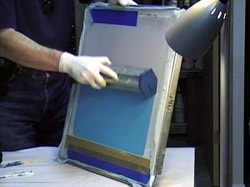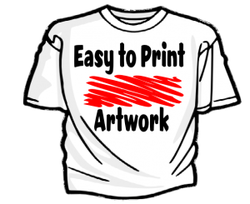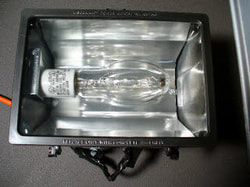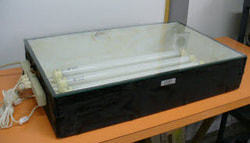 This one of the most popular questions that we receive at American Screen Printing Association. Many people want to build their own exposure unit for screen printing and the key component of any exposure unit is the light source. So the question always comes up, what kind of light should I use in my exposure unit? Before we discuss what is the best type of light for burning screens, two important questions must be asked first.
 1. TYPE OF EMULSION Most people who want to build their own exposure unit mistakenly think that the light source is the most important consideration. It isn't. While the light source will determine what kind of art you can use to make a stencil, the type of emulsion or capillary film that you use is actually more important. If you think of emulsion (or capillary film) as the “photographic film” used to make your stencil, think in terms of speed and light sensitivity. Photopolymer emulsion is very sensitive to light. It exposes very quickly and has a wide exposure time range. Manufacturers developed photopolymer emulsion products because they know that many screen printers use an exposure light source that is less than ideal. Photopolymer liquid emulsions (and photopolymer capillary film) work well even with poor light sources. Using a photopolymer emulsion (compared to a diazo-based emulsion) when you have a low UV light source will make a huge difference toward success or failure when making a stencil.  2. ARTWORK The next major factor is artwork. Are you going to be screen printing images that do not have tiny dots and/or small fine lines or type? If you answered yes, the type of light that you use will not be that important. Artwork with large blocky areas and have medium to large size type can be exposed easily with any type of light source. Again, this is assuming that you are using screens coated with photopolymer emulsion. If you want to print halftone images, very fine lines, and tiny text, a low UV light source is not recommended. In that case, you will need a commercial exposure unit that uses a UV rich light source (metal halide or mercury vapor bulb) and has a light integrator to control the light output accurately during the exposure process.  TYPES OF EXPOSURE LAMPS As previously explained, the ideal light for screen exposures is one that is rich in ultra-violet (UV) light. Fluorescent and halogen lights are low in UV light. But they are low cost to purchase and readily available. This is why most low cost exposure units have them as a light source. On the other hand, a light source high in UV, e.g. metal halide or mercury vapor bulbs are more costly, not as easy to source, and more difficult to implement into a typical home-made exposure unit. As a result, you don't see them used as often.  SUMMARY To summarize, if you are building your own exposure unit, the type of exposure lamp that you use is not that critical if you are going to be printing “easy to expose” art and your screens are coated with photopolymer emulsion. Yes, fluorescent, halogen bulbs and LED lights will work. But if you want make stencils with tiny dots, fine lines, and tiny printed type, you will have go the route of a professional grade exposure unit. BUILDING YOUR OWN EXPOSURE UNIT and COMMERCIAL UNITS If you want to build your own expose unit, read the ASPA article: “How to Build an Exposure Unit.” If you want more information on commercial exposure units, visit the ASPA Screen Printing Equipment and Supplies Directory>Exposure Units.
0 Comments
Your comment will be posted after it is approved.
Leave a Reply. |
AuthorASPA Staff ArchivesCategories
All
|
Copyright © 2004-2024 American Screen Printing Association Inc. (ASPA) | The #1 Ranked Screen Printing Association on the Web | All Rights Reserved.



 RSS Feed
RSS Feed